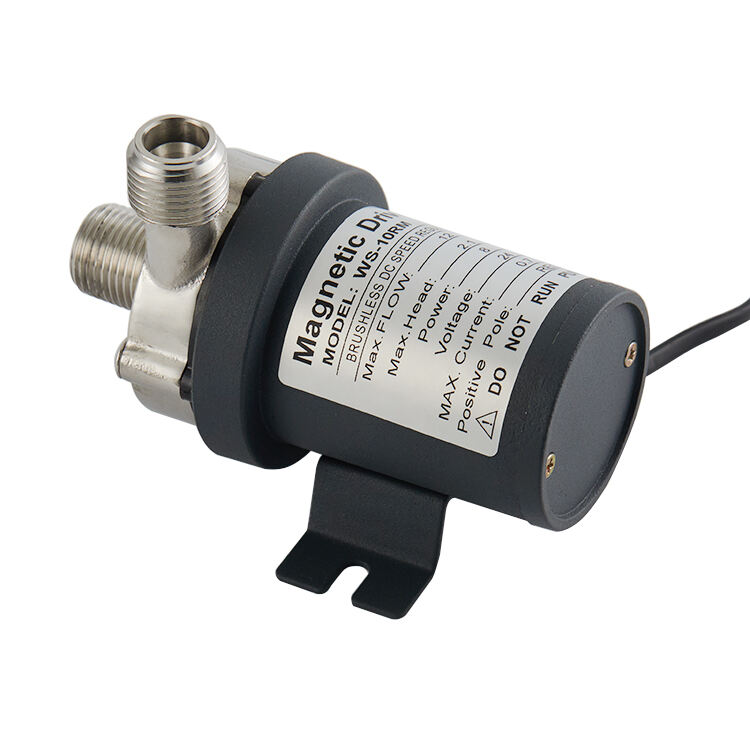Understanding the Essential Role of Wort Transfer in Home Brewing
For passionate home brewers, the journey to creating exceptional craft beer involves mastering both the art and science of brewing. Among the crucial equipment decisions, selecting the right wort pump stands out as a pivotal choice that can significantly impact your brewing efficiency and final product quality. A well-chosen wort pump not only streamlines your brewing process but also helps maintain temperature consistency and reduces the risk of contamination during transfers.
Whether you're an experienced brewer looking to upgrade your setup or a newcomer ready to advance beyond basic equipment, understanding wort pump selection is essential. The right pump can transform your brewing experience, making it more efficient, safer, and ultimately more enjoyable.
Key Considerations When Selecting a Wort Pump
Material Construction and Durability
The construction material of your wort pump directly influences its longevity and performance. Food-grade stainless steel remains the gold standard for wort pumps, offering exceptional durability and resistance to corrosion. When evaluating options, look for pumps with 304-grade stainless steel components, as this material withstands high temperatures and frequent cleaning cycles without degradation.
Beyond the main body, examine the quality of seals and gaskets. Silicone or EPDM materials offer excellent heat resistance and maintain their integrity even after repeated use. Remember that your wort pump will be handling hot liquids regularly, so investing in quality materials pays dividends in longevity and reliability.
Flow Rate and Head Pressure Specifications
Understanding flow rate requirements is crucial for selecting an appropriate wort pump. Most home brewing setups benefit from pumps capable of delivering 7-15 gallons per minute, though your specific needs may vary based on your system design. Consider the vertical distance (head pressure) your pump needs to overcome, as this affects its performance significantly.
When evaluating flow rates, remember that actual performance may differ from advertised specifications when pumping hot wort, which has different fluid dynamics than water. Choose a pump with slightly higher capacity than your minimum requirements to ensure smooth operation under various conditions.
Temperature Management and Heat Handling
Maximum Temperature Ratings
Wort pumps must handle near-boiling temperatures without failure. Look for models rated for continuous operation at temperatures up to 230°F (110°C). This ensures safe operation during the most demanding brewing phases, including the hot break and whirlpool stages.
Quality wort pumps incorporate thermal protection features to prevent damage from excessive heat. Some advanced models include temperature monitoring systems that automatically adjust performance or shut down if unsafe conditions are detected.
Heat Retention Capabilities
Maintaining consistent wort temperature during transfer is crucial for brewing success. Select a pump designed with minimal heat loss characteristics, including insulated housings and efficient fluid paths. Some wort pumps feature pre-heating capabilities, allowing them to reach operating temperature gradually and reduce thermal shock to the system.
Consider how the pump's design affects temperature stability during extended operations. Models with integrated heat shields or cooling fins can help maintain optimal operating temperatures without compromising performance.
Maintenance and Cleaning Considerations
Ease of Disassembly
Regular cleaning is essential for maintaining sanitary brewing conditions. Choose a wort pump that can be easily disassembled without special tools. Quick-release clamps and modular designs facilitate thorough cleaning and inspection of all components, ensuring proper sanitation between brewing sessions.
Look for pumps with minimal crevices or hard-to-reach areas where residue might accumulate. The ability to completely disassemble the pump head for cleaning can significantly reduce the risk of contamination and extend the life of your equipment.
Cleaning Protocol Requirements
Different wort pump designs require varying cleaning approaches. Some models are compatible with clean-in-place (CIP) systems, while others need manual cleaning. Consider how the pump will integrate into your existing cleaning routine and what additional maintenance steps might be necessary.
Invest in pumps that can withstand common brewing sanitizers and cleaning solutions. The best wort pumps include detailed cleaning guidelines and are designed to resist chemical degradation from regular sanitization procedures.
Advanced Features and Technology Integration
Control Systems and Automation
Modern wort pumps often include sophisticated control features that enhance brewing precision. Variable speed controls allow fine-tuning of flow rates, while digital displays provide real-time monitoring of operating parameters. Some advanced models offer programmable settings for different brewing stages, improving consistency across batches.
Consider whether features like remote operation or integration with brewing software would benefit your setup. While these additions may increase initial costs, they can significantly improve brewing efficiency and repeatability.
Safety Features and Protection Systems
High-quality wort pumps incorporate multiple safety features to protect both the equipment and the brewer. Look for models with dry-run protection, automatic shutdown capabilities, and thermal overload prevention. These features can prevent costly damage and ensure safer operation during long brewing sessions.
Advanced protection systems might include flow sensors that detect blockages or air in the line, preventing pump damage and wort loss. Consider how these safety features align with your brewing process and risk management preferences.
Frequently Asked Questions
How often should I replace my wort pump seals?
Regular inspection of pump seals is recommended every 3-6 months, depending on usage frequency. Replace seals immediately if you notice any signs of wear, hardening, or degradation. Most manufacturers recommend annual replacement of all seals as preventive maintenance, even if no visible wear is present.
Can I use my wort pump for other brewing tasks?
While wort pumps are designed primarily for transferring hot wort, many models can safely handle various brewing tasks, including circulation during mashing and cooling processes. Always verify compatibility with your specific pump's specifications and ensure proper cleaning between different applications.
What maintenance schedule should I follow for my wort pump?
Implement a regular maintenance schedule that includes thorough cleaning after each use, monthly inspection of all components, and quarterly deep cleaning of the entire pump assembly. Document any unusual sounds, vibrations, or performance changes, and address issues promptly to prevent more serious problems.

